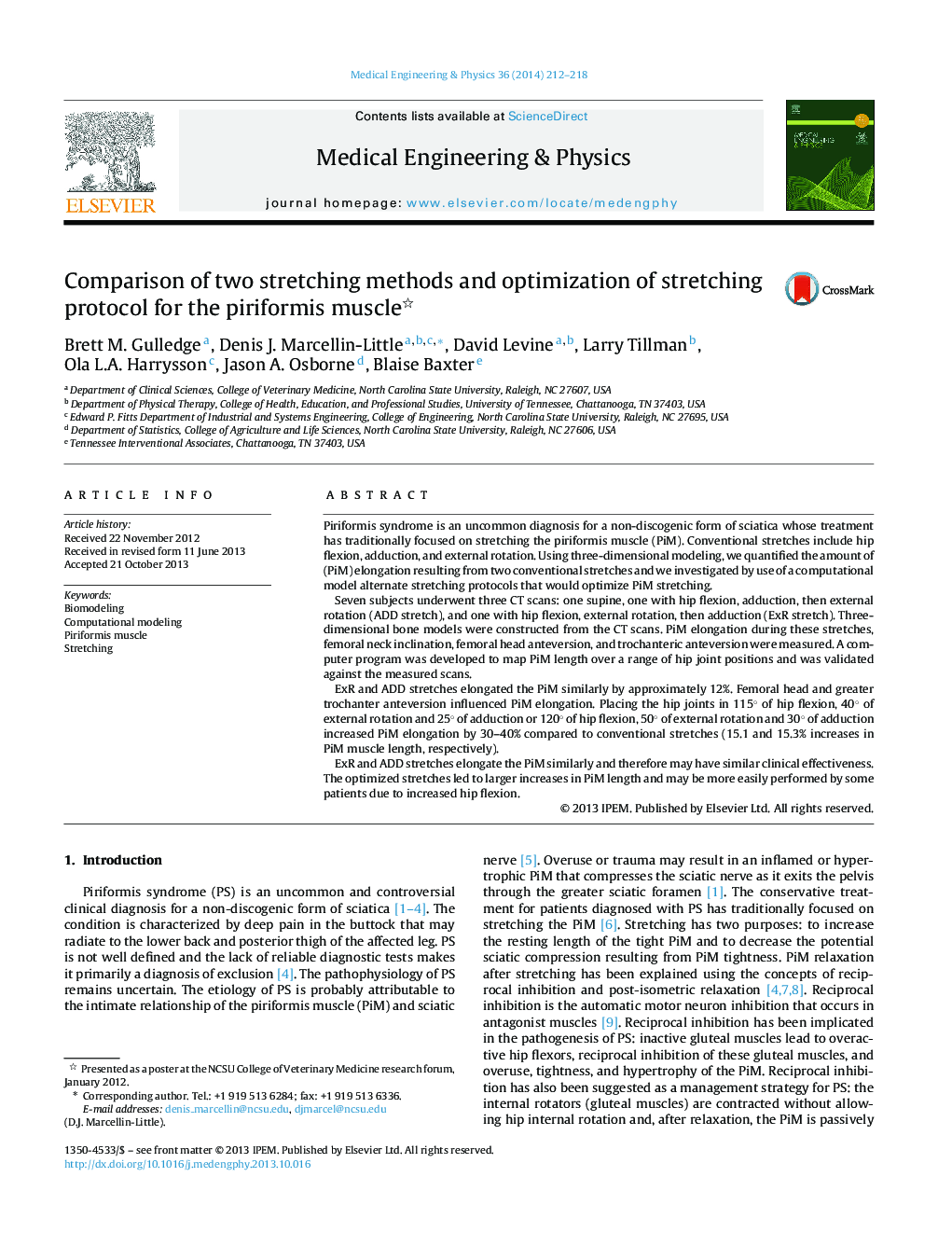| کد مقاله | کد نشریه | سال انتشار | مقاله انگلیسی | نسخه تمام متن |
|---|---|---|---|---|
| 876000 | 910819 | 2014 | 7 صفحه PDF | دانلود رایگان |
Piriformis syndrome is an uncommon diagnosis for a non-discogenic form of sciatica whose treatment has traditionally focused on stretching the piriformis muscle (PiM). Conventional stretches include hip flexion, adduction, and external rotation. Using three-dimensional modeling, we quantified the amount of (PiM) elongation resulting from two conventional stretches and we investigated by use of a computational model alternate stretching protocols that would optimize PiM stretching.Seven subjects underwent three CT scans: one supine, one with hip flexion, adduction, then external rotation (ADD stretch), and one with hip flexion, external rotation, then adduction (ExR stretch). Three-dimensional bone models were constructed from the CT scans. PiM elongation during these stretches, femoral neck inclination, femoral head anteversion, and trochanteric anteversion were measured. A computer program was developed to map PiM length over a range of hip joint positions and was validated against the measured scans.ExR and ADD stretches elongated the PiM similarly by approximately 12%. Femoral head and greater trochanter anteversion influenced PiM elongation. Placing the hip joints in 115° of hip flexion, 40° of external rotation and 25° of adduction or 120° of hip flexion, 50° of external rotation and 30° of adduction increased PiM elongation by 30–40% compared to conventional stretches (15.1 and 15.3% increases in PiM muscle length, respectively).ExR and ADD stretches elongate the PiM similarly and therefore may have similar clinical effectiveness. The optimized stretches led to larger increases in PiM length and may be more easily performed by some patients due to increased hip flexion.
Journal: Medical Engineering & Physics - Volume 36, Issue 2, February 2014, Pages 212–218
